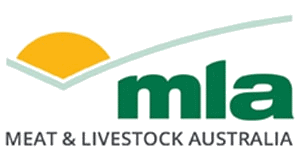Precision Wool and Meat Production
| Project start date: | 15 April 2006 |
| Project end date: | 04 June 2009 |
| Publication date: | 01 January 2012 |
| Project status: | Completed |
| Livestock species: | Sheep |
| Relevant regions: | National |
|
Download Report
(0.5 MB)
|
|
Summary
There is a lack of information about the performance of Merinos with different genetic merit for wool and meat production in contrasting environments. Some evidence in the literature suggests management of Merino ewes to maintain good body condition during pregnancy enhances lamb survival and subsequent wool production and growth performance.
The aims of this project were to test two hypotheses:
that progeny of Merino sire genotypes with different wool and meat merit would perform differently in two contrasting environments
that precision management of pregnant Merino ewes to maintain maternal body weight would enhance lamb survival and growth performance in two contrasting environments
The base Merino ewes used were 37% heavier with broader wool at Turretfield compared with Chiswick. In general the precision management of ewes during pregnancy in year one had little effect on lamb performance despite control ewes being 306 kg to 5.7 kg lighter and on average about 12% leaner. At Chiswick where precision managed ewes were 11% heavier than controls lamb birth weight was higher and lamb survival lower than in controls. Lambs from HH sires (high wool/high meat) had higher lamb birth weight than those from LH and HL (wool/meat) sires. The weight advantage for high meat sire progeny generally carried through to weaning, post weaning and for carcase weight. There was little effect of lamb genotype on wool except that HL lambs had longer staple length than HH and HL. There was no significant difference among lamb genotypes for carcase joint weights as a proportion of carcase weight. However an interesting difference in carcase fat was that LH lambs had 20% more fat than HL.
In general there were no obvious genotype by environment interactions, even though numbers of progeny were inadequate to check this thoroughly. An exception was dressing percentage where two sires, both Merinotech, showed different rankings across the two sites. The HH sire's progeny had a much lower dressing % at Chiswick than Turretfield whereas the LH sire was the other way around. In conclusion precision management of ewes had little effect on lamb production in the two environments while genetic selection for high growth sires showed advantages in growth and carcase weight. Selection for high wool sires had little impact on fibre diameter or fleece weight. The fact that progeny from low wool sires had greater carcase fat than high wool sires in worthy of note.
More information
| Project manager: | Alex Ball |
| Primary researcher: | Australian Sheep Industry CRC |


